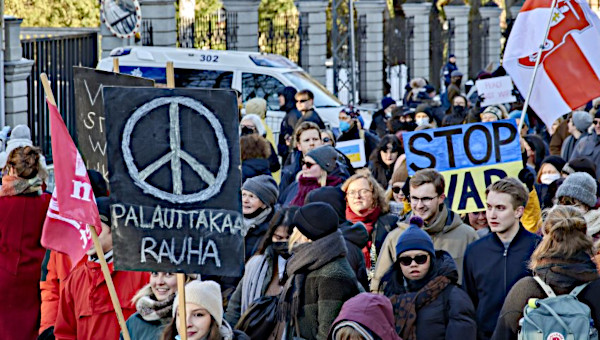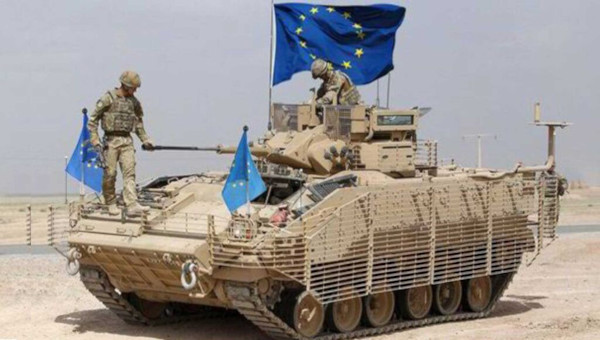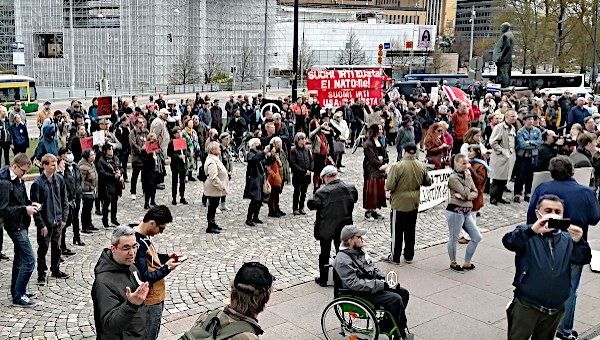NATO Turns Global and Expands Theatres of Escalation
The North Atlantic Treaty Organization (NATO) of 32 Western countries has formally declared its security interests to be global, despite its title and founding mandate as a transatlantic security alliance. The 75th anniversary summit held in Washington (10 July) conceptualised its security as a “360-degree approach,” indispensable and essential. The reason to extend its operations are because the threats to NATO are “global and interconnected.”1 It is the instrument for the “rules-based order” which NATO demarcates from international law. NATO signals that it will operationalise its strategic reach globally anywhere any time and will likely be intolerant and indifferent to the security needs of those outside this exclusive club.
The Washington Summit Joint Declaration has clear and subliminal messages running through it. Threat escalation and NATO expansion through partnerships and alliances in new areas is a priority agenda. Russia is seen as the “most significant and direct threat,” a repeat of earlier positions and NATO policies to weaken Russia will step up. NATO has declared that the greatest “systemic challenges to Euro-Atlantic security” are from China which is mentioned 14 times as a threat and the prime reason for NATO expansion into the Indo-Pacific. Asia is the key security domain with the United States (US) networked agreements with Indo-Pacific allies Australia, New Zealand, South Korea, and Japan, all of whom were present at the Washington summit as proxy NATO members. The China fear that came into NATO documents after former President Barrack Obama’s “pivot to Asia” (2009) is central as under the US’s lead NATO’s attention shifts to Asia.
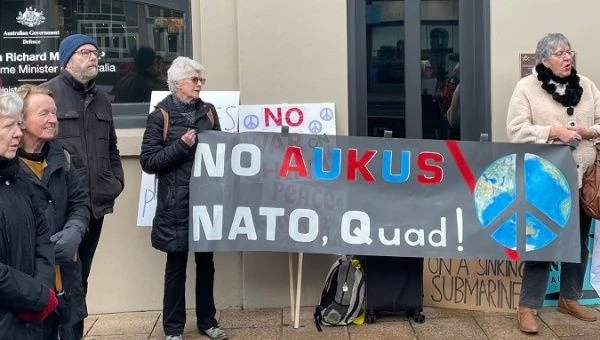
Militarising More Regions
NATO explanation for expanding into West Asia and Africa is that conflict and instability in the region especially Iran’s “destabilizing actions” are a threat to transatlantic security. To attend to such nuisances, NATO will henceforth have a new regional centre in Kuwait, a liaison office in Jordan, and NATO missions in Iraq, adding to the NATO missions in Africa. Fifteen NATO countries have military bases in Africa and since Russian, Chinese, and Turkish militaries also operate here, West Asia and Africa will continue to witness proxy conflicts. NATO does not mention Israel or the Palestine genocide in this document, though the massive funding to Israel is no secret. NATO emphasises the threat of terrorism, which signals that they could revoke, whenever necessary, the “forever wars” decade after the September 2001 attack on the US that had led to interventions and wars in Afghanistan, Iraq, and Libya.
As part of its global reach, NATO will engage in the Western Balkan region and the Black Sea, where they are likely to cross swords with Russia. NATO will militarise the Arctic with its three new members, Finland, Norway, and Sweden, all of whom will have new bases and missiles pointing at Russia. The escalation of security paranoia and expansion into the Indo-Pacific and the global South is the freshly reconstructed arch of NATO that is determined to militarily hold up Western supremacy in a changing geopolitical international system.
Offensive Deterrence and Forward Defence Postures
Another NATO message from Washington is offensive deterrence and forward defence postures by significant increases in defence expenditure, the 18% increase in defence expenditure in 2024 by several NATO members like Canada is lauded in the joint declaration while the European members are urged to spend at least 2% of their GDP on military budgets. More nuclear weapons and the right to use them put an end to the ambiguity of “no first use” policies by the West and Russia. This shatters decades of nuclear disarmament talks and agreements and increases the risk of a nuclear war.
NATO members are accepting US proposals of “burden sharing” as they increase their defence budgets at the cost of social and welfare expenditures. This “burden sharing” includes contributing troops on the ground and sharing the burden of body bags in some conflict theatres, where East European states’ populace can be of use. So, European nations and other allies will share the burden of the US wars across the globe and pay for US–NATO bases. Many bilateral agreements that the US has with its strategic partners contain clauses for “intra-operability” and logistics agreements for US navy ships which intersect with NATO commands.
NATO’s operational strategy is being played out in key theatres of conflict and in regions of aggressive competition.
The European Theatre
The Washington NATO summit stepped up its intention to defeat Russia via Ukraine by throwing more money and weapons. NATO will dedicate another $43 billion (after the earlier $60 billion) for more and better weapons. The carrot for Ukraine’s sacrifice is the promise of an “irreversible path” towards NATO membership made again in Washington, just as it was in 2008 Bucharest and other summits, but not formalised since NATO does not want a direct war with Russia that Article 5 of NATO entails. The escalation in the European theatre is announced with “interoperability” between Ukrainian and NATO militaries, closer integration in the war effort, increase in joint analysis, supply of information and surveillance, closer training of Ukrainian command and forces and positioning a senior NATO representative on the ground in Ukraine and the first NATO–Ukraine Innovative Council.
Further, the US will bring nuclear weapons to Europe and deploy intermediate-range missiles in Germany, facing Russia, which were earlier banned under the Intermediate-Range Nuclear Forces (INF) Treaty that the US withdrew from in 2019. In a move signifying dangerous escalation, NATO has endorsed that the US will allow Ukraine to bomb deep inside the Russian borders with US-supplied F-16 missile-carrying jets, something that the US had considered a step towards direct war earlier. This already led to the Sevastopol, Crimea bombing by Ukraine (23 June 2024) followed by the Russian foreign ministry summoning the US ambassador to say that the US had effectively become party to the war and then Russian lethal retaliations followed. Recently, US Defense Secretary Lloyd Austin and Russian Defense Minister Andrei Belousov held phone conversations (25 June and 12 July 2024) which emphasised the importance of maintaining lines of communication, thus indicating an attempt to manage escalations.
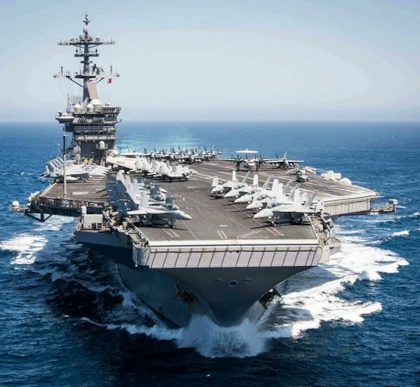
The NATO narrative that if Vladimir Putin is not stopped or if he wins Ukraine war then he will move to conquer the Baltics and central East Europe is a reworking of the earlier domino theory used in the Southeast Asian wars where one country falling to communism would lead to a succession of falls. However, there is no evidence or intent of such Russian intentions. The Russians since the Soviet disintegration and since 2008 have reiterated: no to NATO expansion to Ukraine, even as they reluctantly accepted NATO expansion in the Baltics and central East Europe; they offered five sets of peace agreements on Ukraine – with two Minsk agreements in 2015 (endorsed by the UN Security Council), attempted negotiating with the US in December 2021, two sets of talks in 2022 in Belarus and Turkey and supported China’s attempts at mediation, all of which have been sabotaged or rejected by the NATO bloc.
NATO will continue to use Ukraine as a battering ram to weaken Russia, with little interest in the massive loss of life and damage to Ukraine, a devastated country which is dependent on Western assistance. Military analysts do not see a victory for Ukraine. Yet, the war drags on, at least till the US elections in November 2024. This NATO meeting was concerned with “Trump proofing” the war effort (in case of Donald Trump’s victory and his opposition to this war) so that the NATO plans continue. Negotiations and diplomacy that the global majority asks for are not part of NATO’s toolkit.
The Indo-Pacific Theatre
NATO’s forward policy into the Indo-Pacific frames China as the big threat and “a decisive enabler” of the Russian–Ukraine war. North Korea is the second US target here because of its new military partnership with Russia. This is leading to changes in the military–security landscape. The US/NATO’s method in the Indo-Pacific theatre is to fuse itself onto existing regional tensions that were earlier bilaterally handled. These tensions include those between the Philippines and China; North and South Korea; Vietnam and China; India and China and so on. NATO’s scheme is to superimpose its own agenda here by creating intersecting networks of military agreements like Australia, United Kingdom, US (AUKUS) that will provide Australia with nuclear submarines; additional US bases and military arrangements in the Philippines that will bring Japanese and Australian troops as the Philippines’ relations with China deteriorate; the South Korea–Japan–US triad that puts South Korea in a US-led extended deterrence called “the Korean Three-axis system” with a first strike pre-emptive strategy that targets North Korea.2 In response, North Korea has signed a military agreement with Russia. Russia has the option to assert its role as an Indo-Pacific power and as a strategic partner to China and North Korea. Indo-Pacific is on a dangerous path of militarisation.
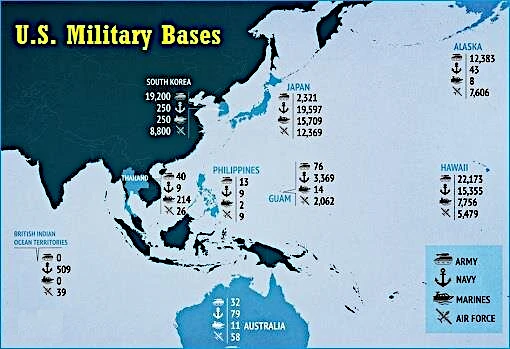
American pressure on India increased as US ambassador Garcetti’s publicly stated that India’s “strategic autonomy” cannot apply in times of conflict, and repeated that Russia will not help India if China attacked and so India and US must work towards principles upholding the rules-based order. India responded by saying that the strategic partnership with US has space for disagreements and Indian external affairs minister clearly stated that “India does not have the NATO mentality.” However, this has not deterred the US from pressurising India, as it increases its interest in South Asian geopolitics. So, all countries in Asia are facing US pressure to be acquiescent to NATO but most countries (outside the close allies) have chosen neutrality and do not want to be part of a great power conflict in the Indian and Pacific oceans and believe that multipolarity is allowing them this option to choose.
Conclusion
The NATO agenda is stated clearly during its 75th anniversary summit that it will go all out to ensure Western dominance globally. It has identified “enemy countries” that are roadblocks to this goal. There is continuity in this perception but also a change in its strategy going forward that steps up escalation and expansion to construct a global grid-like alliance structure that integrates with the transatlantic alliance. NATO’s schemes include expanding membership in Europe and military alliances in the Indo-Pacific and the global South; gradual construction of potential proxies by dangling rewards like “most favoured partnerships,” money, weapons, high-end technologies and benefits from Euro–US military industries; “burden sharing” and interoperability; fusing regional conflicts into NATO interests; unilateral economic measures that include sanctions, trade control, confiscating strategic reserves; controls on high technology for exclusive Western use and so on.
NATO has become a tool for American geopolitical ambitions. The European elite is willingly co-opted in the American project and many analysts see it draining European resources into American wars, away from the human security of their own people. There is some dissent within NATO from leaders like from Hungarian Prime Minister Victor Orbán and Czech President Rico, who advocate negotiations with Russia and peace in Europe.3 They are joined by much of the global majority who want to see an end to this war, a multipolar world safe for international negotiations for climate change, trade, and human development. NATO on the other hand appears to prioritise its own dominance and victory. History will tell who prevails. •
This article published on the InDepthNews website.
Endnotes
- NATO, Washington Summit Declaration, 10 July 2024.
- Francis Daehoon Lee, Northeast Asia: NATO Expansion Amid Complex Crises, Talk at No to NATO Campaign, 10 July 2024.
- Report of Prime Minister Viktor Orbán to Charles Michel, President of the European Council, 18 July 2024.


